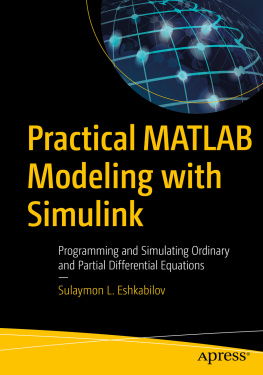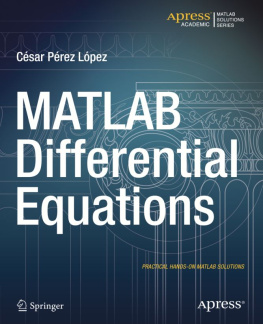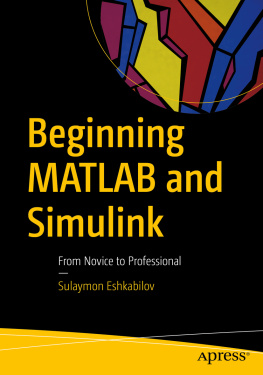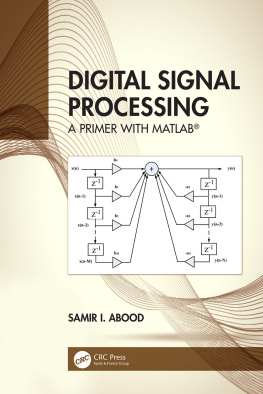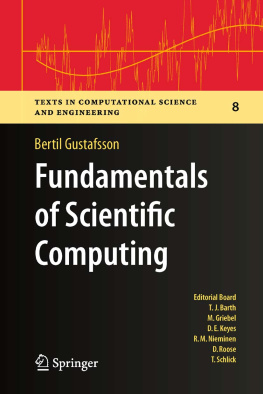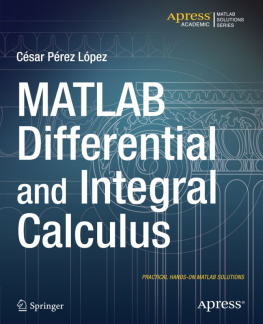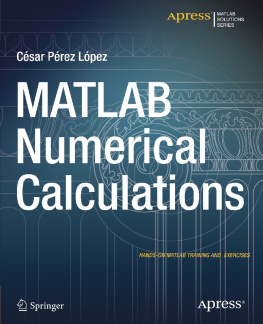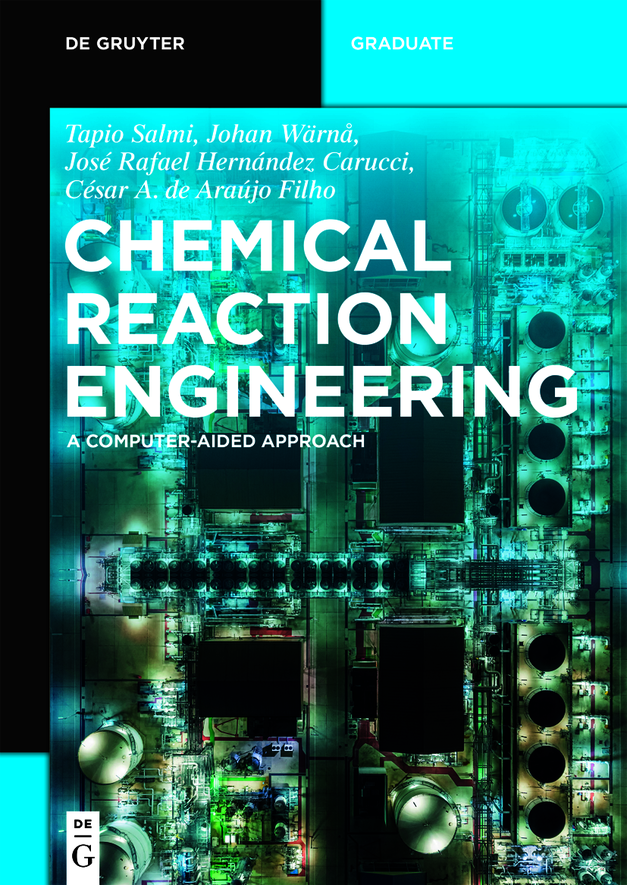De Gruyter Textbook
ISBN 9783110611458
e-ISBN (PDF) 9783110611601
e-ISBN (EPUB) 9783110612509
Bibliographic information published by the Deutsche Nationalbibliothek
The Deutsche Nationalbibliothek lists this publication in the Deutsche Nationalbibliografie; detailed bibliographic data are available on the Internet at http://dnb.dnb.de.
2020 Walter de Gruyter GmbH, Berlin/Boston
Preface
Chemical reactors form the core of any chemical process: 100% of industrially applied chemical processes take place in chemical reactors. The products of chemical processes are numerous: fuels, fertilizers, lubricants, plastics, glass and ceramics, components for electronics, detergents, perfumes, drugs, bioproducts. The list is endless. Modern production technology must be sustainable and clean, which implies that selective routes for chemical synthesis are preferred. The chemical production equipment, the reactor, should operate in a predictable and optimized way.
The big issue in predicting the behaviour of existing reactor systems and designing new ones is mathematical modelling based on mass, energy and momentum balances. However, models alone can produce imaginary reactors only. The models need their parameters, such as rate and equilibrium constants, mass and heat transfer coefficients etc. Models appearing in connection with chemical reactors are typically highly non-linear in their nature. This fact emphasizes the role of numerical computing: analytical solutions to balance equations are limited to simple mostly isothermal cases. Analytical solutions to classical, mainly linear problems in chemical reaction engineering are treated in detail in many excellent textbooks of the field.
The aim of this book is not to compete with existing textbooks in chemical reaction engineering, but to illustrate how models of chemical reactors are built up in a systematic manner, step by step, how the numerical solution algorithms for the models are selected and finally, how computer codes are written for numerical performance. Nowadays, the programming language selected for use in reactor modelling is almost a matter of taste. Among many options, we have stuck with some of them: Matlab, Python and Fortran. Examples solved with Matlab and Python demonstrate how various reactor problems can easily be simulated with a high-level programming language. This approach has the advantage that the engineer can focus all his efforts on the physical and chemical problem itself. Most problems can be solved by merging the appropriate program components together. To solve advanced reactor problems, a fundamental programming language, such as Fortran or C++, is still needed.
Chemical engineers working with chemical reactors in the industry and in academia recognize the current reality: chemical reaction engineering is a rapidly developing area; more and more complex systems are involved in new sophisticated reactors such as monoliths, reactors with structural packings, multiphase fluidized beds and microreactors. Simultaneously, sophisticated modelling concepts are applied to well-established reactor systems, such as tank reactors and fixed beds. The existing commercial process simulation software can help us to some extent, but particularly in developing new process concepts and improving the present ones, tailored reactor modelling and numerical simulation are inevitable steps. Thus, a professional of chemical reaction engineering should know the basic principles of reactor modelling, including kinetics, thermodynamics, transport phenomena and flow modelling and the solution of models by numerical techniques. In this book, we provide the physicalchemical fundamentals of reactor modelling and mathematical models for some standard designs of chemical reactors. In our opinion, this basic knowledge and way of thinking is needed for the modelling of new, avant-garde reactors.
Many excellent books have been published to describe existing chemical processes along with reactor and separation equipment. For this reason, the qualitative description of various chemical reactors is kept to a minimum, at a level necessary for understanding the basis of mathematical modelling. Similarly, the multitude of correlation equations appearing in chemical reaction engineering and transport theory is not reviewed in detail. Instead, some simple, classical correlations are presented in order to demonstrate how correlation equations are integrated in the modelling of chemical reactors.
Recently, highly exact flow modelling achieved by solving Navier-Stokes equations has become fashionable. The concept called computational flow dynamics (CFD) provides a detailed idea of the fluid velocity field in the vessel. Coupling flow modelling with chemical reactions is a very demanding task and thus worthy of a separate treatment. Therefore, the CFD approach to reactor modelling is not discussed in this book. Furthermore, the authors believe that a major share of chemical reactor modelling will also follow the classical pathway in future: description of reaction kinetics and thermodynamics, mass and heat transfer effects coupled with models for a priori determined flow patterns.
We hope that this book will attract readers both from academia and the industry, for example, postgraduate students and researchers who wish to initiate a reactor modelling project of their own as well as engineers dealing with reactor modelling and design in their everyday work.
This interdisciplinary book is the result of long-term fruitful collaboration among chemical engineers, numerical mathematicians and computer experts. The material has been gradually developed and presented on international postgraduate courses in chemical reaction engineering at bo Akademi University.
The authors are grateful to numerous members of the team at the Laboratory of Industrial Chemistry and Reaction Engineering, bo Akademi, who have contributed to the concept of computer-aided chemical reaction engineering: Dr Jari Romanainen, Dr Sami Toppinen, Dr Juha Lehtonen, Dr Esko Tirronen, Dr J.-P. Mikkola, Dr Mats Rnnholm, Dr Fredrik Sandelin, Dr Sebastien Leveneur, Dr Matias Kangas, Dr Henrik Grnman, Dr Teuvo Kilpi and Dr Vincenzo Russo. Without their enthusiasm and devotion and the experience and scientific results they contributed, this book would never have seen the light of day. Mr Daniel Wrn made a valuable contribution to the final word processing of the text. Last but not least, Professor Heikki Haario from Lappeenranta University of Technology has made an enormous contribution to the development of parameter estimation procedures for chemical engineering he is behind the implementation of many exercises presented in this book. We are grateful to our families for steady support during this long task.
In Kuressaare/Saaremaa, Estonia, at Bishops castle, March 2016,
The Authors
Nomenclature
a
shape factor
a
area-to-volume ratio
A
frequency factor
A
area, particularly area accessible to mass and heat transfer
A,B,
general coefficients
c
concentration
cp
mass-based heat capacity
cmP
mole-based heat capacity
d
diameter
D
diffusion or dispersion coefficient
De
effective diffusion coefficient
E
density function
Ea
activation energy
f
function
F
frequency function
H
reaction enthalpy
g
function in regression analysis
G
Gibbs free energy
G
mass flow per cross-section
h
heat transfer coefficient
j
factor for heat and mass transfer
k
rate constant
kF,kL,kG
mass transfer coefficients
K
equilibrium constant
K



